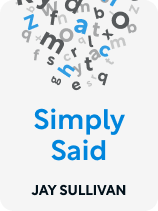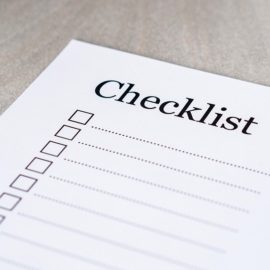

This article is an excerpt from the Shortform book guide to "Simply Said" by Jay Sullivan. Shortform has the world's best summaries and analyses of books you should be reading.
Like this article? Sign up for a free trial here .
Do you often write emails? What are some things you should keep in mind when writing a professional email?
Writing emails is an essential skill in the modern-day professional milieu. Most people read dozens of emails a day, so it’s critical that your emails convey the message with the recipient in mind—consider your goal in writing the email and make it crystal clear to understand what you want them to do with it.
Here’s how to write good emails every time.
Writing Emails
Jay Sullivan, the author of Simply Said, writes that there are over 100 billion emails sent every day. To keep yours from ending up in the “unread” pile, he offers the following tips on how to write good emails:
Avoid vague subject lines. Give enough context for what the email is about. For example, instead of “quick question,” say “question about the Project XYZ timeline.” If your email thread has morphed into another topic after a lengthy exchange, update the subject line to reflect the current discussion. (Shortform note: As Sullivan says, billions of emails are sent every day. Getting the subject line right can make your email stand out in an overflowing inbox. Aside from being specific, experts recommend limiting it to six to eight words and putting the most important words in the beginning.)
Know who to name. If you’re writing to three people or fewer, name everyone in your opening greeting. Otherwise, opt for something more general, such as “Sales Team.” (Shortform note: Additionally, don’t shorten people’s names (for example, from Gregory to Greg) unless you’re sure that they prefer the nickname.)
Make it easy for the other person. Adhere to Sullivan’s golden rule of focusing on your reader: Make it easy for them by clearly stating requests and deadlines and responding promptly—even if it’s just to acknowledge the email and say you’ll get back to them later. Use polite language, and say “please” and “thank you” to minimize the chances that your email will be misinterpreted.
| Respond to Emails Based on the Sender’s Personality You can take Sullivan’s advice of focusing on the other person even further by identifying an email sender’s communication style and responding accordingly. In Surrounded by Idiots, Thomas Erikson writes that there are four personality types at work, and each one has a distinctive writing style: Red personality: Driven by the desire to dominate or lead others, red-dominant people send emails that are short and to the point, with no small talk. How to respond: Reply immediately, and keep it brief. Yellow personality: Driven by the desire to inspire or influence others, yellow-dominant people use animated language, exclamation points, and casual words, and aren’t afraid to show emotions in their message.How to respond: You can take your time, but don’t forget to reply. Use a friendly tone. Green personality: This type is driven by the desire for stability or routine and security. While their emails are approachable like the yellows’, green-dominant people are more polished—they pay attention to punctuation and stick to a professional tone without sounding cold. How to respond: As with the yellow type, reply with a friendly tone. Show appreciation when appropriate. Blue personality: Driven by the desire to comply, or to do things as they are meant to be done, blue-dominant people tend to do things by the book, so their emails are emotionless, practical, and professional.How to respond: Acknowledge that you received the email. Make sure you carefully read the message as well as all the attachments so that you don’t ask questions that have already been covered. |

———End of Preview———
Like what you just read? Read the rest of the world's best book summary and analysis of Jay Sullivan's "Simply Said" at Shortform .
Here's what you'll find in our full Simply Said summary :
- A blueprint for effective business communication
- How to create and deliver memorable presentations
- How to write documents and emails that people will actually read






